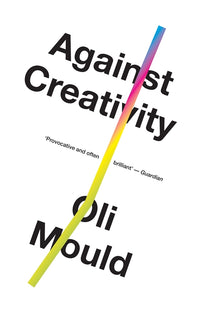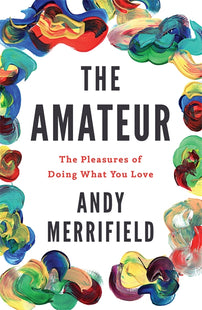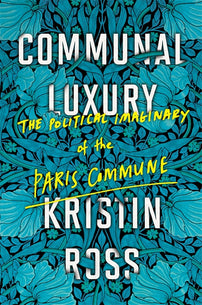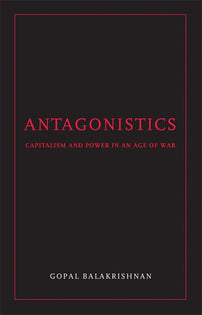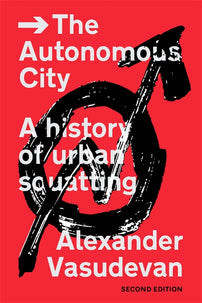Psychedelic Multiverses: Cleansing the present of a dead Capitalist Future
Oli Mould, author of Against Creativtiy, on the post-covid shift to aesthetic imaginaries of alternative planetary presents.
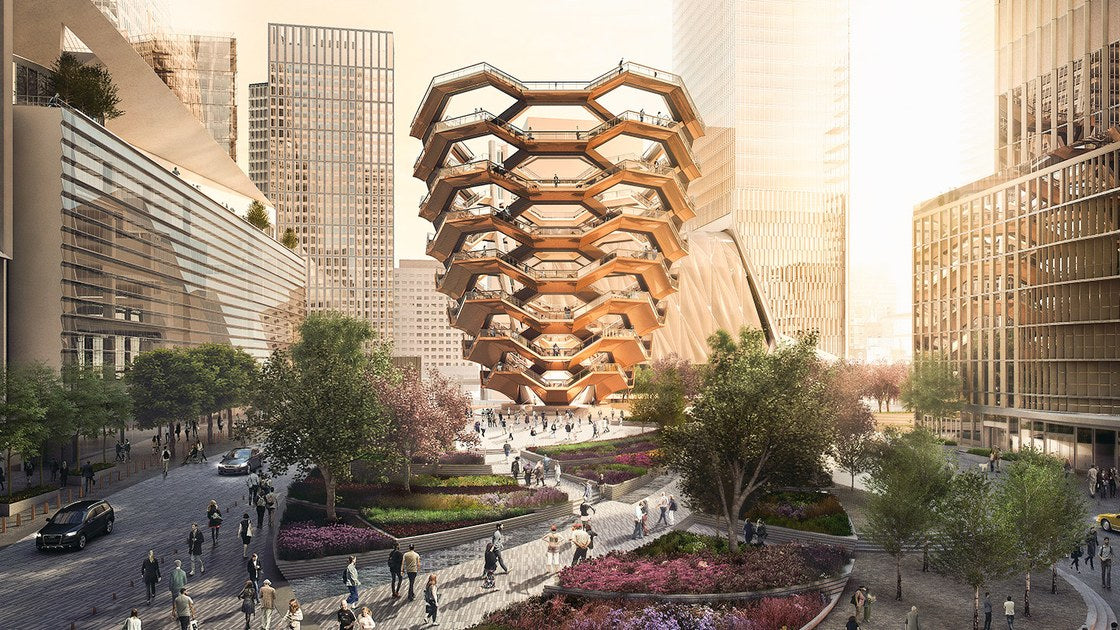
During the pandemic, as the world locked down, our cultural imaginations (led of course by those with the financial clout to make this visible, i.e. Hollywood production studios) yearned not for alternative futures, but alternative presents. Under the narrative premise of the ‘multiverse’, the pandemic has given rise to a distinct post-covid shift to aesthetic imaginaries of alternative planetary presents.
Even before the covid event, wildfires chocked the Amazon rainforest, the Australian continent, Canada and California with intense breathlessness and rising temperatures; perhaps as planetary extension to the coronavirus itself - the symptoms of which include breathlessness and high temperatures. And of course, not to be outdone by these asphyxiating symptoms of climate change and coronavirus itself, the brutality of police who murdered George Floyd (among others), whose final words were ‘I can’t breathe’. The current apocalyptic event is viral, climatic, colonial, racial: and it is all encased in capital.
The dead future that capitalism has engineered is here in the now. Multiverse imaginaries therefore are perhaps our current attempts to psychedelically re-engineer the present that is pregnant with the lessons of the past and the possibilities of a better future.
Clearly Hollywood is not the vehicle that will do this, largely because it tends to allegorise ‘alternative’ presents as queer, othered that somehow need correcting. As ever, we can look to less mainstreamed versions in world cinema, children’s books, novels, art installations (and even in our own dreams via the act of lucid dreaming).
To put all this another way: imagining a world beyond capitalism, a common world in which the injustices of capital are no longer part of life, requires a radical imagination; an imagination that, as I have written elsewhere[1], has been hijacked and co-opted by capitalism. Why is it that in trying to envision a common utopia, we often fall back on the tropes of the present? Why is a real-life and actualised aesthetics of the commons so out of reach? What is it about life under capitalism that we are seemingly unwilling to let go?
As Mark Fisher wrote in the work he was writing before he sadly left this world,
“The principal, though by no means the sole, agent involved in the exorcism of the spectre of a world which could be free is the project that has been called neoliberalism… [which is] best understood as a project aimed at destroying — to the point of making them unthinkable.”[2]
Ultimately then, capitalism thrives because any critical movements counter to it are aware of its lack of constructive possibilities, but have yet to overcome its destructive ones.
If we are to finally undo the stranglehold of capitalist realism, then undoing and rejecting the libidinal desire it offers is only capable if we replace it with something else.
In order to find such a movement, Fisher argued that we need to retreat back to the counter-culture movement of the 1960s. In his unfinished work ‘acid communism’, he argued that the neoliberalism of capitalist realism invoked a stunted individualism, “designed to both surpass and make us forget those collective forms”.[3] So, to recall these multiple forms of collectivity is “less an act of remembering than of unforgetting, a counter-exorcism of the spectre of a world which could be free.” For Fisher then, “we need now to return to a time when the prospect of universal liberation seemed not just possible, but imminent.”[4] This he explains as a psychedelic ethic.
[book-strip index="1" style="buy"]Psychedelic ethics
This forgotten psychedelic ethic contains revolutionary potential. Indeed, the etymology of the word is Greek, psyche – mind and deloun – ‘make visible’ or ‘reveal’. Relating to the Marxist trope of ‘lifting the veil’, psychedelic motifs allowed for people to fully experience the jouissance of a life not predicated upon stifling and suffocating capitalist social relations, but upon the intimate connectivity between the self and the matter of the material world around them (and perhaps it is no coincidence that the official poster for the recent joyous multiverse-themed film, Everything, Everywhere, All at Once has a distinctly psychedelic feel).
Such experiential atmospheres are accessible all around us. They may come from different cultures, traditions and social activities that we as individuals aren’t used to or indeed comfortable with, but they nonetheless have a material existence. These are moments of affective and often collective experiences of excess that we have all experienced at one time or another. And it is that intangible, atmospheric and affective excess – however you experience it – that is to be harnessed for a post-capitalist and common future. It is an ‘excess’ that is experienced largely because it radically distorts the experienced reality of a dimension that is often underutilised in radical critique – that of ‘time’.
A psychedelic experience – in the broadest meaning of the term – is an imminence of a common experience radically different to capitalist relations, unconstrained by our experience of the timeframe of ‘the present’. The present is occupied by what Scott Schwartz wonderfully calls a ‘wealth pollution’ from the future.[5] He uses the example of Hudson Yards in New York, specifically the Vessel to highlight how the detritus of a dystopian urban future littering the present.
In developing the anachronistic tendencies of the commons a bit further we can turn to the work of a Christian theologian Kathryn Tanner[6], who writes of how the present as a conceptual temporality has been completely redefined by capitalism, specifically by the form of financialized capitalism that neoliberalism has ushered in. In discussing traders on the stock market, she argues that they have to completely forgo any memories of the past or indeed thoughts of the future, and react within ‘the edge of the about-to-be-past and the about-to-be-future’.
In other words, they have to forgo the connections that past successes or failures can have with present actions (just as throwing a 6 on a die 100 times in a row has no effect at all on whether the next throw will be a 6 or not). The market does not work predictably, so in order to maximize potential profits, traders must learn to segment themselves from the contiguity of the flow of social time and operate within the market’s logic of time. Indeed, many financial institutions do away with the ‘gut’ feeling of traders altogether and have employed complex algorithms in high-frequency trading (HFT) techniques that can conduct millions of transactions in a single second. In this instance, the speed of decision-making is critical because milliseconds can make a difference of millions of dollars. So much so that even the physical distance between the computers doing the HFT and the internet router is taken into account, given that the information will get to the more distant computers a fraction of a millisecond later. Even the speed of light, it seems, is too slow for financialised capitalism.
Refusing to enter the future that capitalism generates is thus a radical act. This means not building the future; not transforming the present into the future. To return to what Simon Schwartz says: “Let the future rot. No one has nor ever will live in “the future”; it’s a hypothetical zone that justifies perpetual exploitation.”
[book-strip index="2" style="display"]Cleansing the Present
And so the role of art and culture in the contemporary conjuncture is to ‘cleanse’ the present of the detritus of the capitalist future. In other words, art and culture need to act psychedelically: by ‘lifting the veil’ of the capitalist pollution of status quo and indulge in the many possibilities of the present. How this can be achieved is a more difficult question; one that will require what Chantal Mouffe has called ‘agonism, or dissensus’; indeed she argues that critical art is “art that foments dissensus, that makes visible what the dominant consensus tends to obscure and obliterate…giving a voice to all those who are silenced within the framework of the existing hegemony.”[7]
Art therefore that opens up debates, and as Donna Haraway suggests we do and “stay with the trouble”.[8]
To do this then, there are two key principles that are embedded in this agonistic thinking: mutualism and proletarianization: or to use a more accessible lexicon: mutual aid and publics.
Mutual aid has been thrust into the limelight during the pandemic; not least as it was the first line of supply for many vulnerable people who could not go out for food, were isolating and needed emotional support, children without home learning equipment and so on. But many of the ‘volunteers’ that mobilised were artists.
In the UK, there was a groundswell of radical action that met the chronic need exposed by the lack of state action.[9] There is no doubt that we can all think of many similar instances in our own neighbourhoods. Mutual aid, as political praxis is drawn from the anti-capitalist tradition and is about building autonomous networks of solidarity and care beyond the violence of the State.
While mutual aid during the pandemic gained visibility and political applause from all sides of the spectrum, it is a threat to capital because it organises people to experience fulfilment, joy and desire outside of a marketized system. Mutual aid as praxis is vital for a common future; and artists, many of whom live in and comprise precarious communities, know that as well as anyone else.
Similarly, cultural production must be proletarianized. Any art that doesn’t make a claim for working class solidarity ends up as part of the neoliberalization machine.
We can look back to the Paris Commune of 1871: Kristin Ross argues that the common-ing practices that it enacted back then blurred the boundaries between hitherto immutable institutions such as education, art and politics. As she argues;
“More important than any laws the Communards were able to enact was simply the way in which their daily workings inverted entrenched hierarchies and divisions – first and foremost among these the division between manual or artistic and intellectual labour. . . What matters more than any images conveyed, laws passed, or institutions founded are the capacities set in motion.”[10]
Dwelling on the Commune’s ‘Manifesto of the Federation of Artists’, Ross states that the Communards were using the social experimentation of the Commune to completely ‘de-privatize’ art and beauty and were integrating them into everyday and educational life. The manifesto was an attempt by the artists of the Commune to therefore proletarianize artistic production, to take museums and monuments back into public and working-class owner- ship, and have the art and architecture on display subject to democratic control. This reconnection between art, the public and the common sphere was an important moment of the Commune, and one that is vital to the realization of a planetary commons more broadly.
This revitalisation of the publics of art is direct conflict to the privatisation that clouds the present. Public art is nothing of the sort; public space is nothing of the sort. The ‘pubilc-ness’ of public space is always a mere superficiality, seemingly rubber stamped by planning officials by the appearance of some insipid generic ‘public art’. The same with museums, galleries, biennales, festivals; if they exclude the poor and the working class then what claim to radicality can they ever make?
Art and culture of the current conjuncture therefore requires an aesthetic movement that encourages a radical and necessarily reparative connection with our fellow marginalised humans, and indeed with the materiality of the world around us: as the philosopher Bruno Latour has argued, we need to ‘reterrestrialize’ our belonging in the world.[11] This, among other things, is to indulge in mutual aid and a re-invigorating of the ‘public’ as direct corrective to the rampant privatisation of our world.
Aesthetics that speak to the actually existing multiverses are all around us and too numerous to mention: eco-squats, afro-futurism, civic assemblies, feminist and anti-fascist artistic collectives or communes in the Californian
desert and indeed many more. They are just diffuse, and hidden by the detritus of a capitalist future. To rid the present of the pollution of dead future, we need an aesthetics – a radical creativity – that refuses to engage in commodity fetishism and a constant reification of an apocalyptic future, and instead psychedelically reignites our desire for collectively imagining a radically different present.
[book-strip index="3" style="display"][1] Mould, O (2018) Against Creativity. Verso, London.
[2] Fisher, M. & Colquhoun, M. (2020) Acid Communism. Pattern Books, New York, page 9.
[3] Fisher, M. & Colquhoun, M. (2020) Acid Communism. Pattern Books, New York, page 22.
[4] Ibid. 24.
[5] Schwartz, S. (2022) Nekronology: The End of the Future at the Hudson Yards. Antipode. Early online view.
[6] Tanner, K. (2019) Christianity and the New Spirit of Capitalism. Yale University Press, New York.
[7] Mouffe, C. (2007) Artistic Activism and Agonistic Spaces. Art and Research: A Journal of Ideas, Contexts, and Methods, 1(2): page 5.
[8] Haraway, D. (2016) Staying with the Trouble. Duke University Press, New York.
[9] See the results of a research project I recently undertook here: mutualaid.uk.
[10] Ross, K. (2015) Communal Luxury: The Political Imaginary of the Paris Commune. Verso, London, page 50.
[11] Latour, B. (2017) Facing Gaia: Eight Lectures on the New Climatic Regime. Polity, Cambridge.
